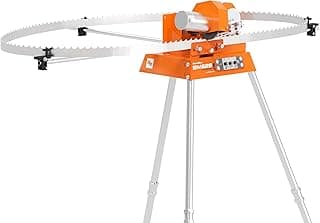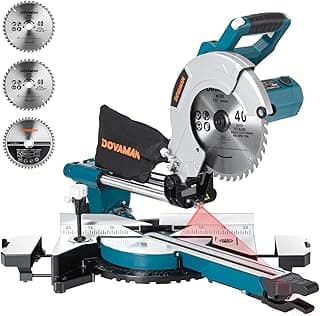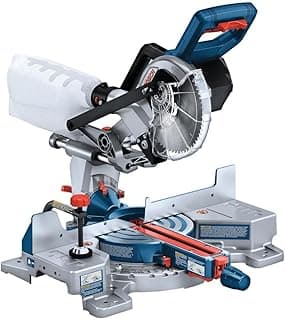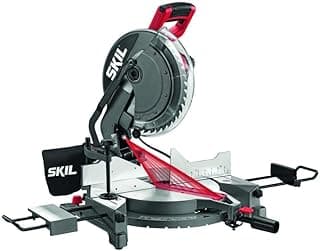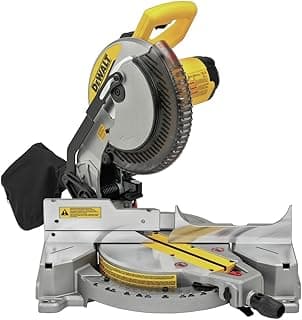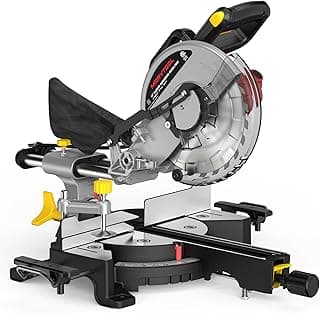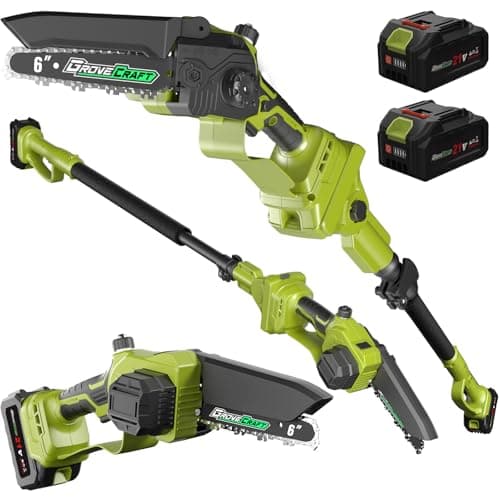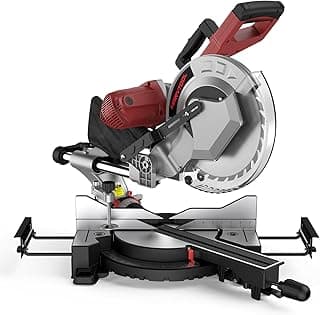When it comes to processing logs into lumber efficiently, a reliable band saw mill can make all the difference. Choosing the right model, however, can be tricky. If budget is a concern, exploring the best band saw under $500 might be a good starting point for hobbyists. For those with limited workspace, models considered the best band saw for small shop offer compact yet effective solutions. And for anyone seeking top-tier performance, understanding what defines the best band saw overall ensures your investment delivers precision and durability. But don’t worry—we’ll break down everything you need to know so you can make an informed choice without wasting time or money.
Top Picks
Best Portability: 32″ Portable Sawmill, 420cc Gas Engine, Max Log 32″ Band Saw
The 32″ Portable Sawmill stands out with its impressive 32″ maximum log diameter and 7″ cutting depth, allowing homeowners and small wood shops to handle substantial timber efficiently. Its 19.7 ft guide rail accommodates long logs up to nearly 189″, and the powered lift system makes raising and lowering the sawhead effortless. Setup is simplified with 12 adjustable leveling feet and fine-adjustment outriggers, ensuring stability even on uneven terrain. The 15HP 420cc gas engine delivers reliable cutting performance outdoors, and the modular components arrive on a single pallet for easy, fast assembly.
From a user perspective, buyers appreciate the combination of large capacity and portability, noting that the remote control adds convenience during operation. Some mention the need for regular gas engine maintenance and the weight of components as minor drawbacks, but overall, it is viewed as a practical, durable sawmill for small-scale milling projects.
Best Compact: Wood-Mizer LX50SUPER Portable Sawmill 26" Log Diameter - 14HP Gas Engine
The Wood-Mizer LX50SUPER Portable Sawmill offers a practical solution for small wood shops and homeowners with limited space. It handles logs up to 26″ in diameter, providing a 23.5″ width of cut and 8″ cutting depth, suitable for a variety of lumber projects. The 14HP gas engine delivers dependable performance for consistent outdoor sawing. Its compact footprint makes it easier to transport and store compared to larger mills, though it requires 132″ sawmill blades, which are sold separately.
Customers value its balance of power and portability, noting that it performs well for medium-sized logs while occupying minimal space. Some users point out the added cost and effort of sourcing blades and the limitation on maximum log size, but overall, it is regarded as a convenient and efficient sawmill for small-scale operations.
Best Power: 32" Portable Sawmill (5 x Blades Included), ZONSEN 459cc 15HP E-Start Gasoline Engine
The ZONSEN SM-32 32″ Portable Sawmill delivers a robust solution for homeowners, woodworkers, and small-scale sawyers. It handles logs up to 32″ in diameter and 17′ in length, producing boards up to 29″ wide and 7″ thick. The 459cc 15HP 4-stroke air-cooled gasoline engine with electric start ensures reliable operation even in remote locations. Setup is straightforward, allowing users to begin milling within minutes, and included 5 blades and a 6.6′ track extension make it ready to use out of the box. Precision rulers and adjustable cutting thickness enable efficient use of raw material and minimize waste.
From a user perspective, owners appreciate its powerful engine, large capacity, and versatility in milling different hardwoods like cedar, walnut, and oak. The manual saw head control offers precision but may require practice and physical effort, while the machine’s weight can make transportation more challenging. Overall, it is seen as a strong, practical sawmill for those seeking high productivity and durability in a portable package.
What to Look for When Shopping
Selecting the right band saw mill involves more than just picking a model with the best reviews. Here are key factors to consider:
1. Cutting Capacity:
Check the maximum log diameter and length the mill can handle. Ensure it matches the types of projects you plan to undertake. Larger mills can handle full-sized logs, but smaller mills offer portability and are perfect for hobbyists.
2. Power Source:
Band saw mills can be gas-powered, electric, or manual. Gas-powered mills provide mobility but require maintenance. Electric mills are quieter and require less upkeep but may need a stable power source.
3. Blade Quality and Speed:
A durable blade is crucial for smooth cuts. Look for high-quality steel blades and variable speed options to accommodate different wood densities. Blade width and tensioning systems also impact precision.
4. Portability:
Some band saw mills are designed for easy transport, allowing you to mill logs directly in the forest. Consider whether you need a stationary or portable model based on your workspace.
5. Frame and Build Quality:
A rigid, well-constructed frame ensures consistent, straight cuts. Lightweight frames may be easier to move but can vibrate more during cutting, reducing accuracy.
6. Ease of Use and Maintenance:
User-friendly adjustments, clear tension indicators, and simple blade replacement systems make operation much smoother. Regular maintenance is critical for long-term performance.
FAQs
What are the best brands of bandsaw mills?
Several manufacturers have built strong reputations for quality and reliability. Wood-Mizer is renowned for its precision and durable construction. Norwood offers portable, user-friendly options suitable for small workshops. Hud-Son is another trusted brand, providing heavy-duty models for commercial operations. Choosing a brand with readily available parts and service support can save significant headaches down the line.
What are the disadvantages of a bandsaw mill?
While band saw mills are versatile, they do have limitations. They often require more setup and maintenance compared to chainsaw mills. Blade replacement and alignment can be time-consuming. Additionally, some models have slower feed rates, meaning it takes longer to process large logs. They can also be expensive upfront, especially for high-quality or commercial-grade units.
How accurate is a bandsaw mill?
Accuracy depends on the mill’s build quality and blade condition. High-end models can produce extremely straight cuts with minimal kerf loss. For hobbyist or portable models, minor variations may occur, but proper setup and regular blade maintenance can significantly improve precision. Overall, a bandsaw mill can produce accurate boards suitable for furniture, construction, or custom woodworking projects.
Can you use a band saw to mill wood?
Yes, but with limitations. Standard stationary band saws are suitable for cutting smaller logs or slabs but may not handle large timber efficiently. Portable band saw mills are specifically designed for milling logs into lumber. The key is ensuring the saw has the appropriate blade, cutting capacity, and rigidity to handle the size and type of wood you intend to process.
Final Thoughts
Investing in the best band saw mill can transform your woodworking projects, allowing you to process logs efficiently and achieve high-quality results. By considering cutting capacity, power source, blade quality, portability, and brand reputation, you can select a mill that fits both your workflow and budget. Understanding the limitations and maintenance requirements ensures long-term performance. Whether you’re a hobbyist looking to mill occasional logs or a small business producing lumber regularly, the right band saw mill will offer precision, durability, and versatility, making it a central tool in your workshop.









